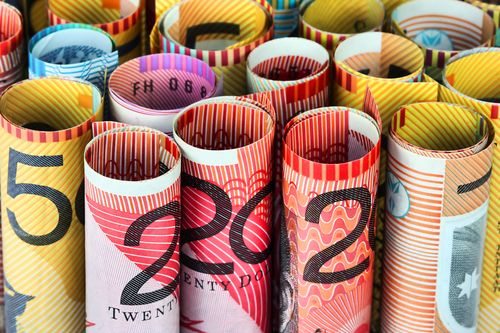In today’s Money Morning…inflation is taking off and our purchasing power is shrinking…Maradona and monetary policy…commodities to hedge against inflation…and more…
‘Honey, I’ve shrunk the banknote!’
That’s how Joel Kandiah, aka The History of Money, titled a TikTok video where he recently displayed a shrivelled $5 Australian banknote.
As Kandiah explained, the note had shrunk after being in contact with ‘extreme heat’. That is, he had ironed his shirt and forgotten the note was in his front pocket.
The short video caught my eye this week after going viral, and I thought I’d share it with you. (You can watch it here.)
It wasn’t so much about warning you of the perils of ironing your notes but rather because it looked like an apt image for what’s happening right now.
That is, inflation is taking off and our purchasing power is shrinking.
Maradona and monetary policy
Most of the world’s attention is now focused on Russia and Ukraine.
Russia is one of the world’s largest oil producers, so a conflict there could spur even higher energy prices…and add more fuel to inflation fears.
At the moment, the US Federal Reserve is getting ready to raise rates to tame down inflation.
This week, too, the Reserve Bank of Australia warned about higher interest rates. As Governor Philip Lowe said during a G20 meeting in Indonesia:
‘Rising interest rates on higher debt with higher asset prices — you can see the fault lines here.
‘We know from previous experience that when countries are on different paths in terms of interest rates, stresses do emerge in the global financial system. I think it’s quite possible, in fact probable, there will be stress points over the next couple of years.’
My thinking is that central banks won’t be in a rush to raise rates too much.
Remember, there are midterm elections this year in the US (and it’s also an election year in Australia). Rising interest rates aren’t good for election time.
But also, because they may hope that a little movement will have a big influence on inflation expectations.
I mean, just remember how in 2005 Lord King compared Maradona’s second goal against England in the 1986 World Cup to monetary policy.
In case you missed it, here’s Lord King:
‘Maradona ran 60 yards from inside his own half beating five players before placing the ball in the English goal. The truly remarkable thing, however, is that, Maradona ran virtually in a straight line. How can you beat five players by running in a straight line? The answer is that the English defenders reacted to what they expected Maradona to do. Because they expected Maradona to move either left or right, he was able to go straight on.
‘Monetary policy works in a similar way. Market interest rates react to what the central bank is expected to do. In recent years the Bank of England and other central banks have experienced periods in which they have been able to influence the path of the economy without making large moves in official interest rates. They headed in a straight line for their goals. How was that possible? Because financial markets did not expect interest rates to remain constant. They expected that rates would move either up or down. Those expectations were sufficient — at times — to stabilise private spending while official interest rates in fact moved very little.’
But with annual US inflation hitting 7.5% in January and running at a 40-year high, they could be running behind inflation and raising rates trying to catch up.
The big concern, though, is that they raise too fast, causing a recession. So it’s a time to be cautious, especially with the high amount of debt around.
Commodities to hedge against inflation
In my mind, inflation will tend to run high, which means that real interest rates will stay negative for a while.
So what can you do when your cash is losing you money?
One place to look at to hedge against inflation is commodities.
And in commodities, gold should do well. One of the main criticisms of gold is that it has no yield, but when real interest rates turn negative, it makes gold more attractive.
In fact, gold has already started to move with all the instability from the conflict in Russia.
But with almost every car company planning on going electric, favourable policy and money flowing into this space, another strategy is to look at commodities needed in the energy transition.
Lithium carbonate prices, for example, are up 400% year-on-year.
With inflation running high, commodities in the energy transition are a great place to be.
Until next week,
 |
Selva Freigedo,
For Money Morning
Selva is also the Editor of New Energy Investor, a newsletter that looks for opportunities in the energy transition. For information on how to subscribe, click here.

